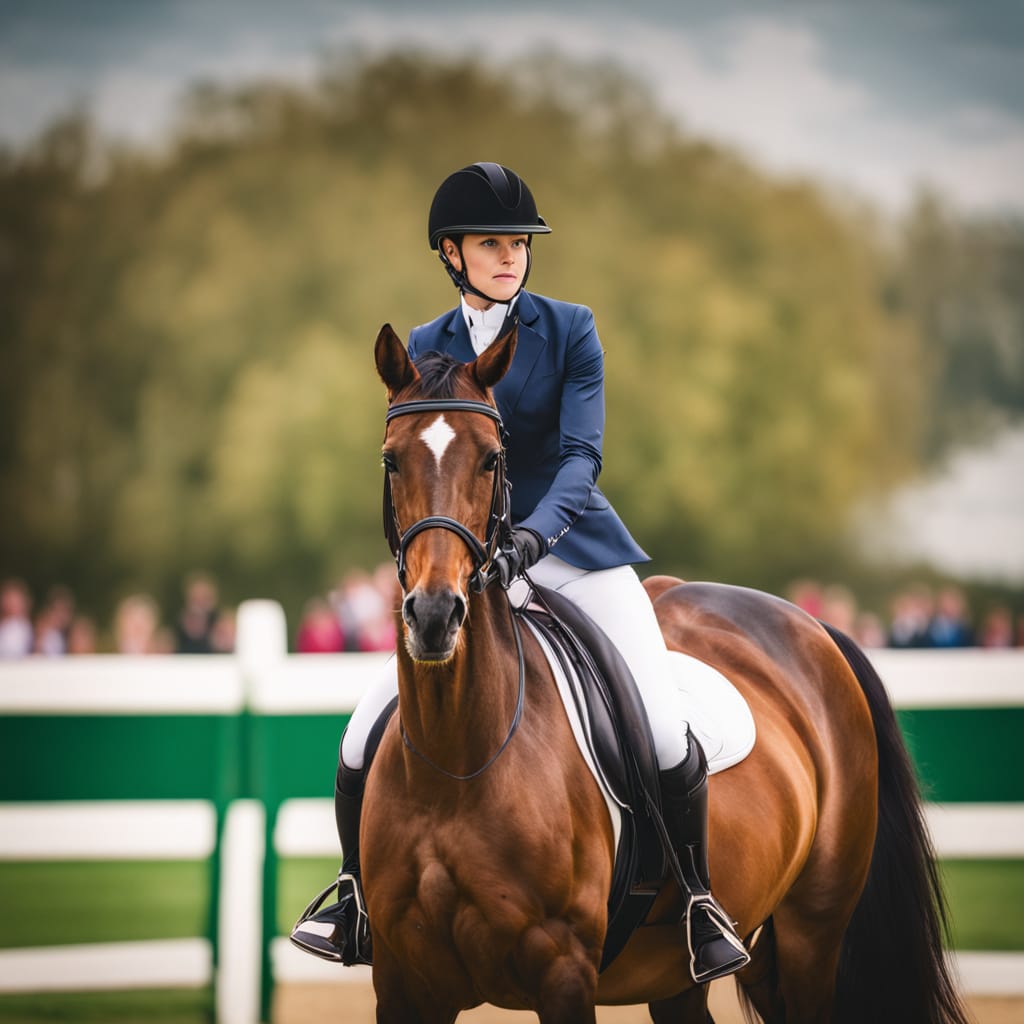
The Timeless Allure of English Pleasure: A Sport of Elegance and Skill
English Pleasure is a celebrated equestrian sport that combines grace, precision, and the harmonious connection between horse and rider. Its roots stretch back centuries, originating from a culture of aristocratic leisure. Today, it is enjoyed by equestrians of all levels, from youth to professionals, across the globe. English Pleasure demands attention to detail, refined horsemanship, and a commitment to excellence. This article explores the origins, global popularity, amateur participation, professional leagues, and the social significance of this extraordinary discipline.
The Origin and History of English Pleasure
The history of English Pleasure dates back to 17th-century England. Aristocrats valued leisure activities that showcased their wealth and sophistication. Horseback riding was not just practical but a means to display refinement. Horses were bred for beauty, smooth gaits, and impeccable temperament. Riders emphasized posture, control, and elegance in every movement.
In the 18th and 19th centuries, formal equestrian exhibitions became popular in Europe. These events highlighted the aesthetic appeal and versatility of riding horses. English Pleasure emerged as a specific category that celebrated smooth gaits, calm demeanor, and polished presentation. Judges evaluated horses based on their ability to maintain a consistent pace and exhibit fluid transitions. Riders were assessed on their posture, attire, and control.
This tradition expanded beyond Europe with the spread of British culture. By the late 19th century, it had found its way to North America and Australia. As horse breeding and equestrian sports evolved, the discipline retained its foundational principles of elegance and harmony.
The Global Popularity of English Pleasure
It enjoys widespread popularity across continents. In North America, the United States and Canada host numerous competitions at the local, regional, and national levels. Organizations such as the United States Equestrian Federation (USEF) and Equestrian Canada promote the sport and set standards for competitions.
In Europe, the United Kingdom remains a stronghold for English Pleasure. Prestigious events often take place at historic venues, drawing competitors and spectators alike. Countries like Germany, France, and the Netherlands also have a strong presence in the discipline, with national federations organizing events regularly.
Australia and New Zealand have embraced English Pleasure as part of their vibrant equestrian communities. Riders often compete in multidisciplinary events, including dressage and show jumping. Meanwhile, countries in Asia, such as Japan and South Korea, have begun incorporating English Pleasure into their equestrian programs, thanks to growing interest in Western sports and culture.
South America and Africa are also seeing increased participation. Brazil and South Africa, for instance, have emerging equestrian scenes that include English Pleasure. Although the sport is not yet as prominent in these regions, its appeal continues to grow due to international exposure and improved equestrian infrastructure.
English Pleasure for Amateur Riders and Youth
Amateur riders form the backbone of English Pleasure, making it accessible to people of all ages. Youth programs, school clubs, and community stables play a crucial role in introducing newcomers to the sport. These initiatives emphasize foundational skills, sportsmanship, and the joy of riding.
For young riders, English Pleasure often begins with pony classes. Children learn basic riding techniques, proper posture, and horse care. Many schools and youth organizations, such as 4-H and Pony Club, include English Pleasure in their curriculums. Competitions for young riders typically focus on fostering confidence and developing strong fundamentals.
Amateur adult riders often participate in local shows. These events provide a supportive environment where individuals can showcase their skills and bond with their horses. Many community stables and riding clubs host these competitions, emphasizing inclusivity and camaraderie.
School and collegiate equestrian programs have also adopted English Pleasure. In the United States, organizations like the Intercollegiate Horse Shows Association (IHSA) offer students the chance to compete while balancing academic commitments. Similar programs exist in the United Kingdom and Australia, where schools integrate equestrian sports into their extracurricular activities.
Professional Leagues and Competitive Circuits
At the professional level, English Pleasure is a highly competitive sport with global appeal. Riders and trainers dedicate years to perfecting their craft and preparing for high-stakes events. Several prestigious leagues and associations govern the sport, ensuring consistency and quality.
In the United States, the USEF oversees professional competitions. Events like the Morgan Grand National and the American Saddlebred World Championship showcase top-tier talent. These competitions attract elite riders and horses, drawing large crowds and media attention.
The United Kingdom boasts iconic events such as the Royal Windsor Horse Show. This event celebrates English Pleasure alongside other equestrian disciplines. Similarly, the Horse of the Year Show (HOYS) features English Pleasure as a highlight, with riders competing for national recognition.
In Australia, the Equestrian Australia (EA) federation organizes professional-level competitions. These events often include English Pleasure as a key category, allowing riders to demonstrate their skills on a national stage. Comparable circuits exist in Canada, France, and Germany, each with unique traditions and competitive structures.
International organizations like the Federation Equestre Internationale (FEI) also recognize English Pleasure as part of their broader mission to promote equestrian sports. While it is not yet an Olympic discipline, the sport enjoys a dedicated following within the equestrian community.
The Political and Social Significance of English Pleasure
Beyond its competitive aspects, English Pleasure holds significant political and social value. The sport reflects cultural heritage, bridging historical traditions with modern sensibilities. It also fosters community, inclusivity, and education.
In many countries, it is closely tied to national identity. Events often take place at historic sites, celebrating equestrian traditions that date back centuries. These gatherings attract diverse audiences, from local enthusiasts to international visitors, promoting cultural exchange.
Socially, English Pleasure serves as a platform for community engagement. Riding clubs and stables often organize charity events and fundraisers, using the sport to support various causes. These initiatives bring people together and create opportunities for education and advocacy.
The sport also promotes mental and physical well-being. Riders develop discipline, patience, and resilience through their training. Horses provide companionship and therapeutic benefits, making the sport accessible to individuals with disabilities or emotional challenges.
Rules and Judging Criteria in English Pleasure
The rules are designed to ensure fairness and consistency. Competitors are judged on the performance of both horse and rider, emphasizing harmony, control, and presentation.
Horses are expected to perform three gaits: the walk, trot, and canter. Each gait must be smooth, consistent, and free of resistance. Judges look for fluid transitions between gaits and responsiveness to the rider’s cues. The horse’s demeanor is equally important. It should appear calm, confident, and willing to work.
Riders are evaluated on their posture, attire, and control. Proper alignment, relaxed hands, and balanced seat position are essential. Traditional attire includes a tailored jacket, breeches, tall boots, and a helmet or top hat. These elements contribute to the polished aesthetic of the sport.
Presentation extends to equipment as well. Tack must be clean, well-fitted, and appropriate for the horse. Saddles, bridles, and other gear are typically designed in classic English styles.
Classes are divided by age, experience level, and horse breed. Some competitions also include specialty categories, such as costume classes or themed events. Regardless of the division, the underlying principles of elegance and precision remain central.
Conclusion
English Pleasure stands as a timeless equestrian sport that celebrates grace, skill, and tradition. From its aristocratic origins to its global popularity, it has captivated generations of riders and spectators. Amateur enthusiasts, youth riders, and professionals alike find joy and challenge in mastering this discipline. Its social and cultural significance further enriches its appeal, making it a cherished aspect of equestrian life worldwide.
Whether you are a seasoned competitor or a curious newcomer, English Pleasure offers something for everyone. The sport’s emphasis on harmony and refinement provides valuable lessons, both in and out of the arena. With its rich history and enduring charm, English Pleasure continues to inspire and unite equestrians around the globe.





